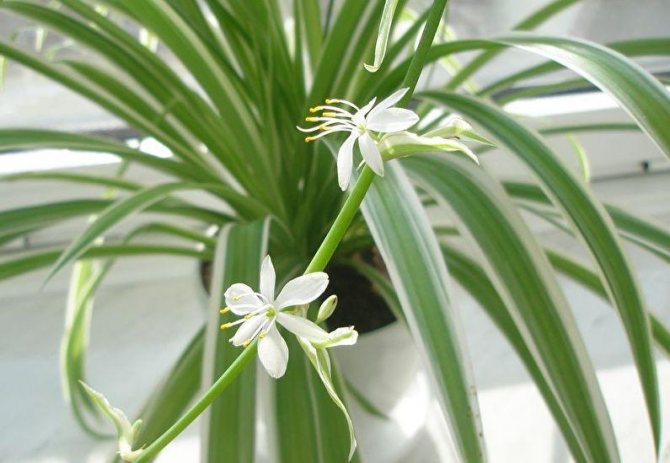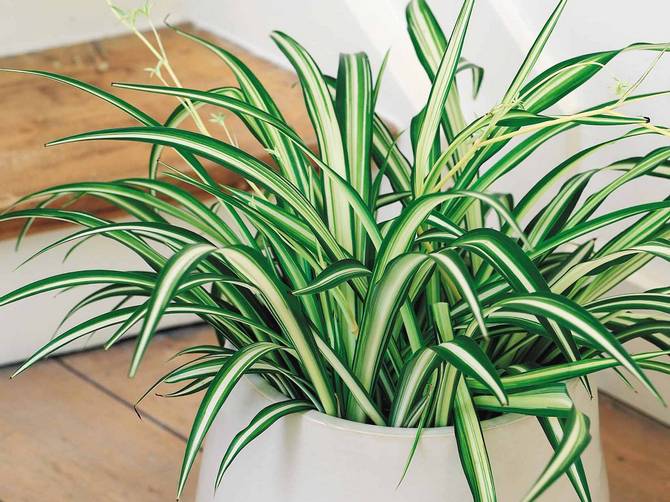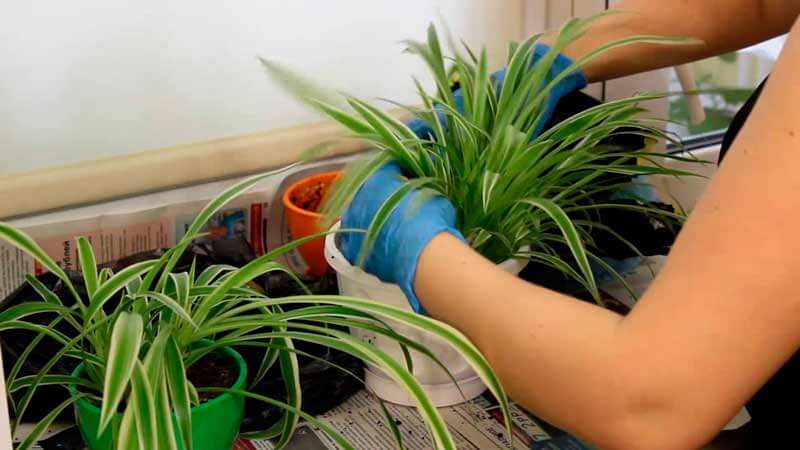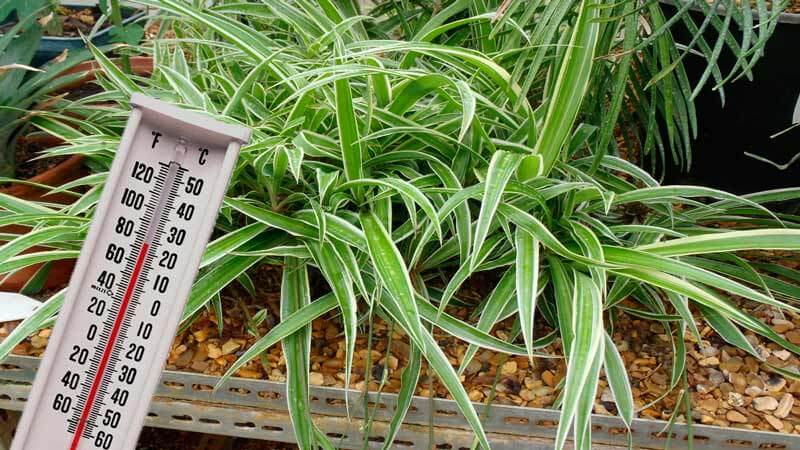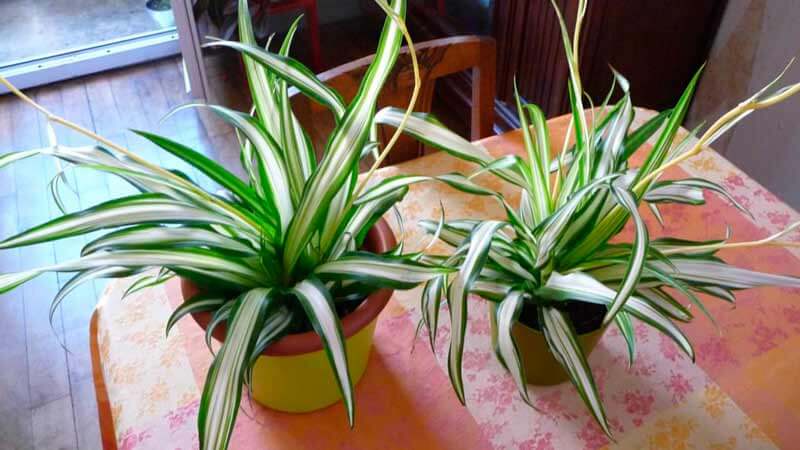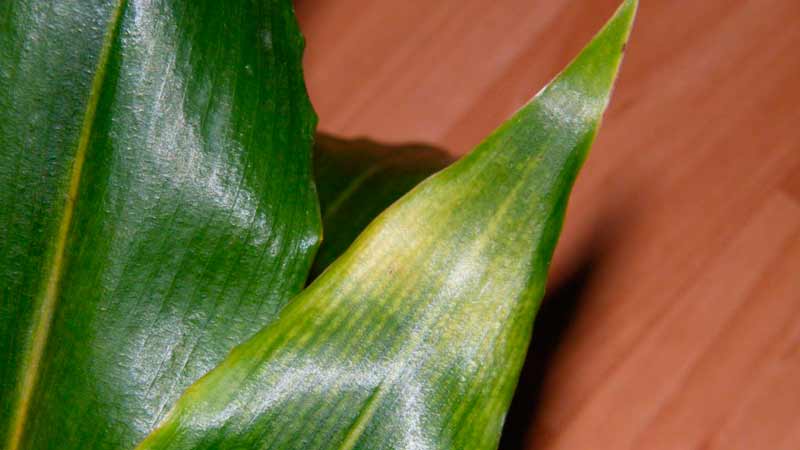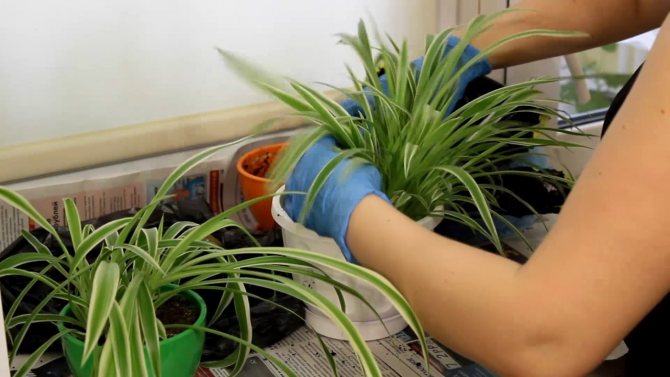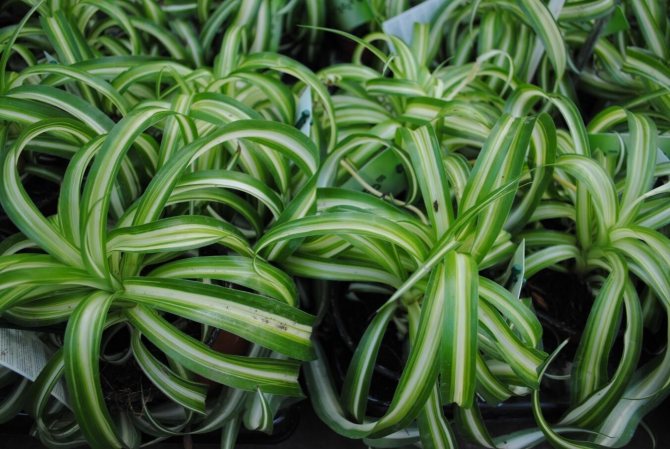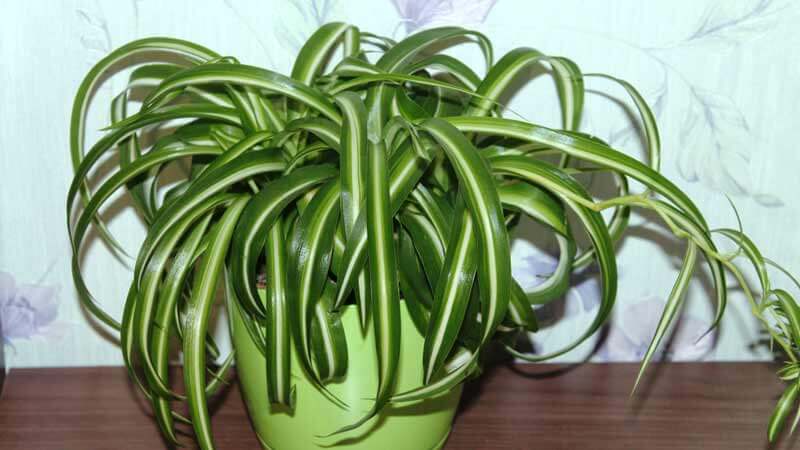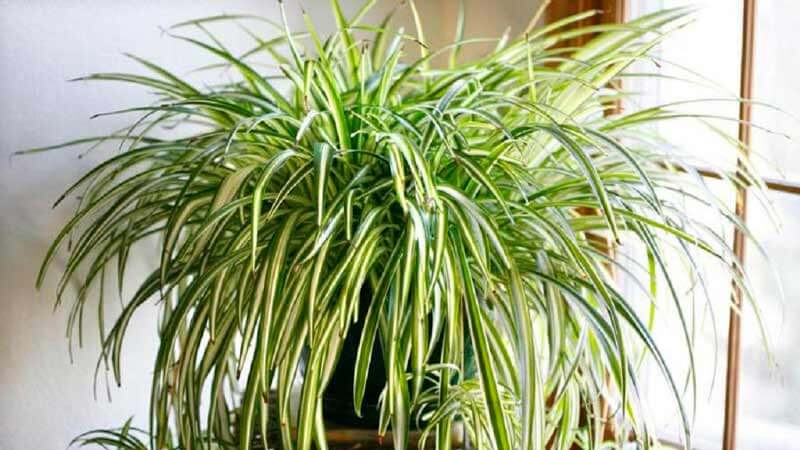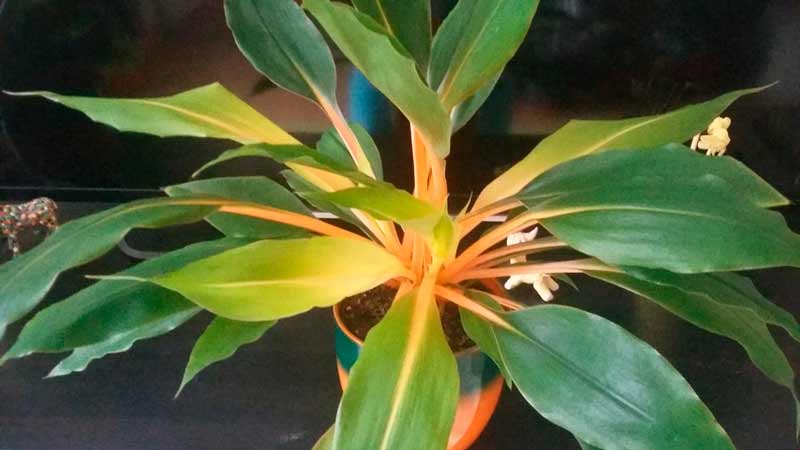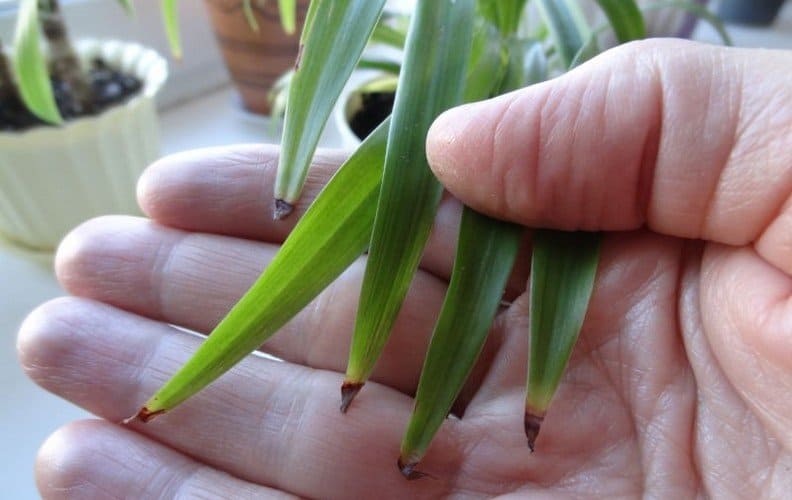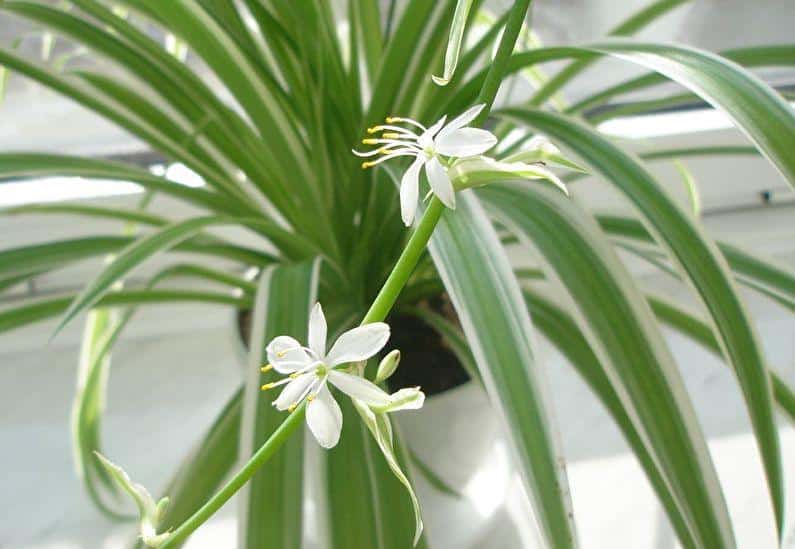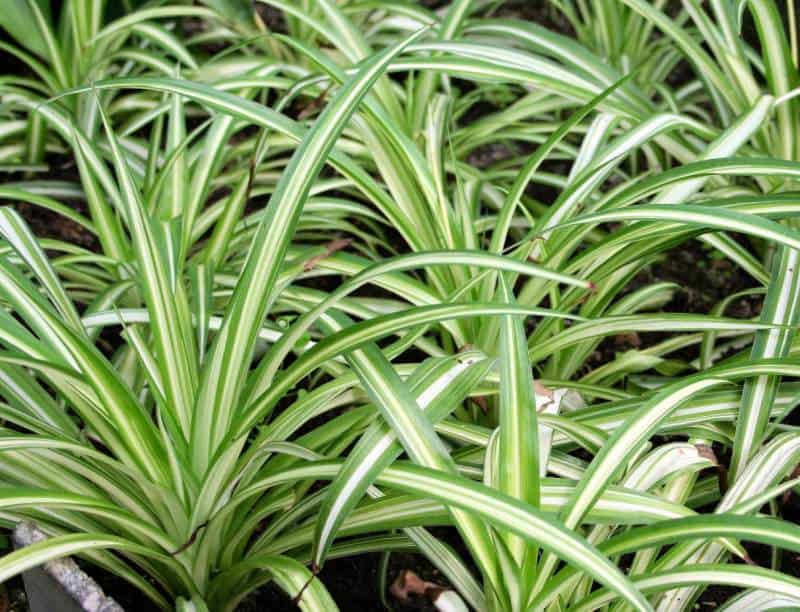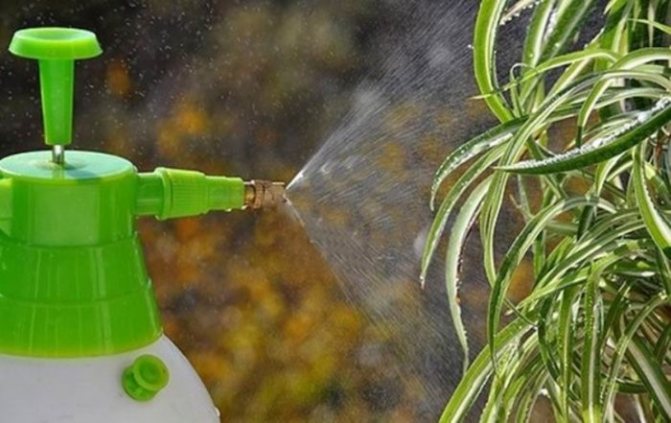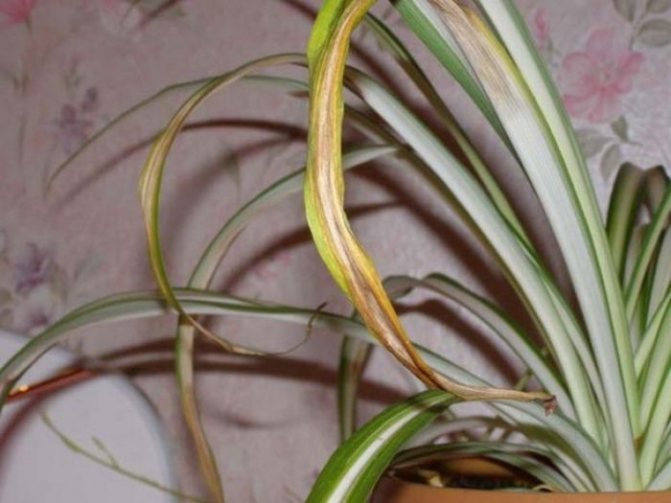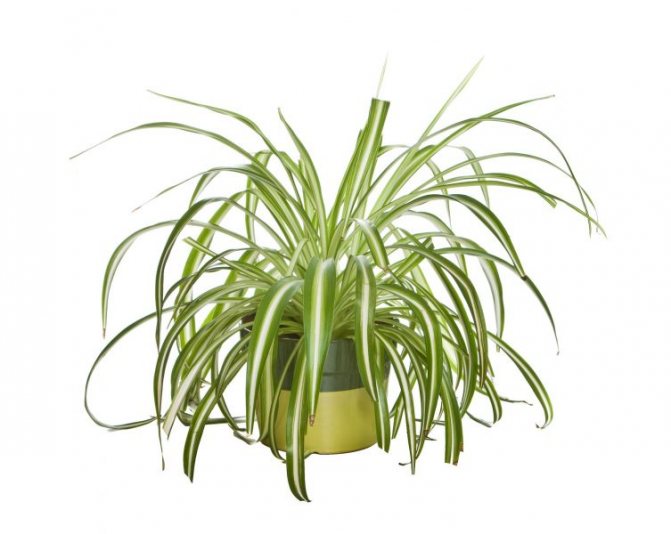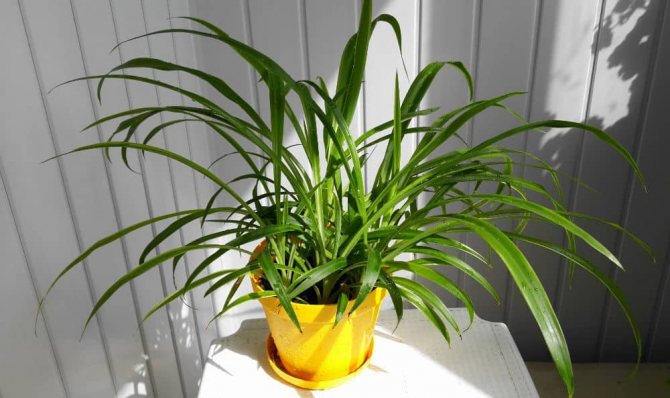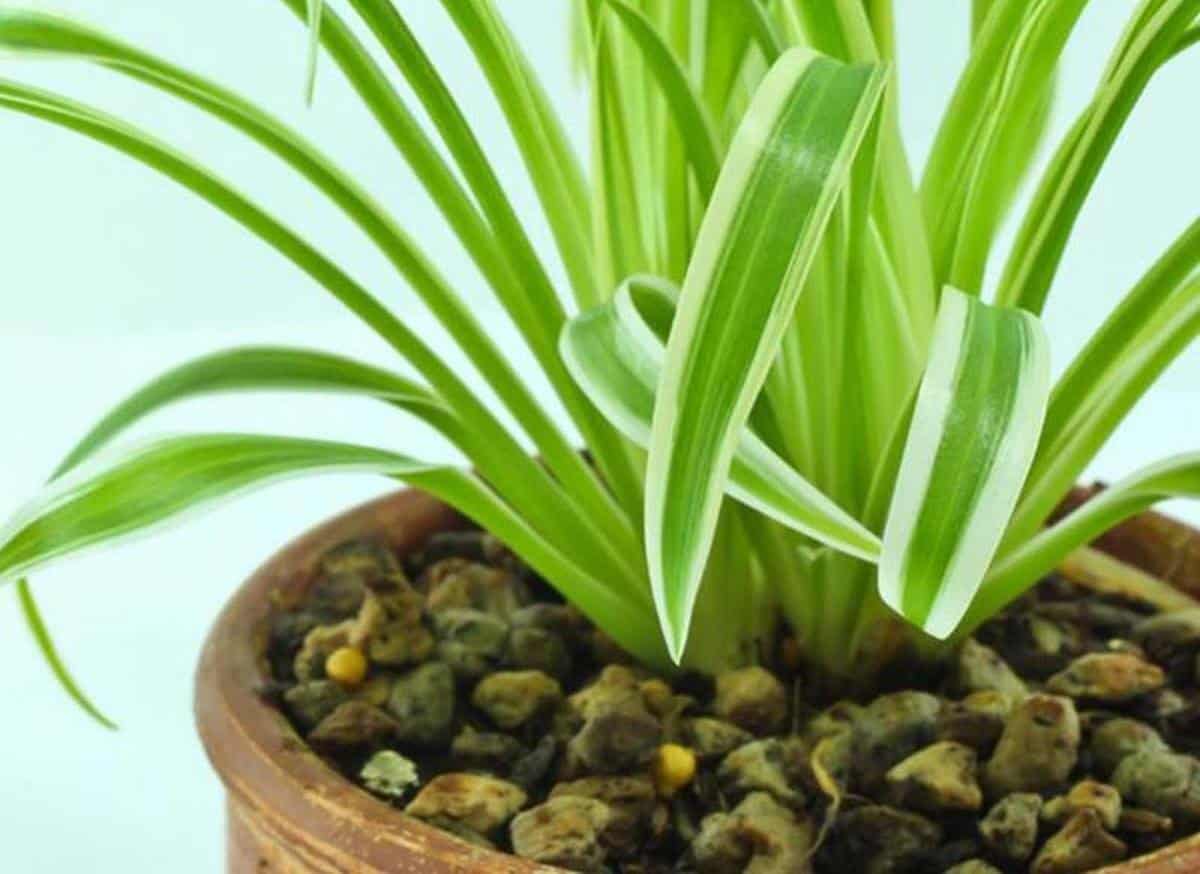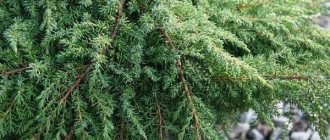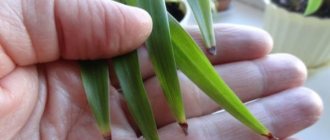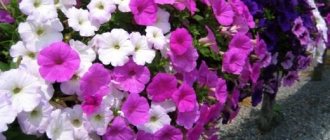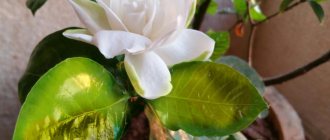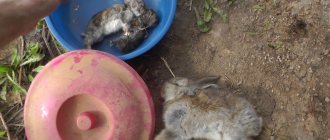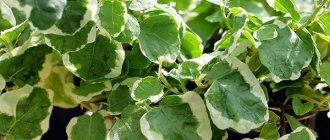Botanical features of cultivation
To understand why chlorophytum leaves dry and what to do about it, you should know the basic botanical features of the plant. Caring for a flower is not at all difficult, but it involves observing some rules:
- Chlorophytum grows best at moderate temperatures. In winter, the temperature should not exceed 18 ° C.
- The decorative culture does not like drafts, as well as cold window sills and non-insulated windows.
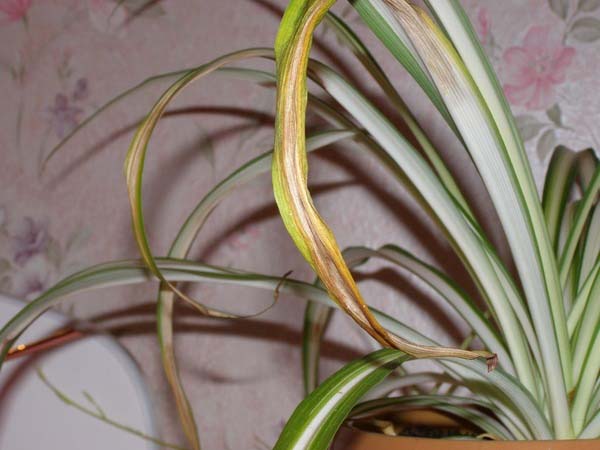
- The plant is photophilous, therefore bright, but diffused light is preferable for it. It is optimal to place the flower on the east and west windows; growing on northern windows with insufficient lighting leads to the loss of decorative attractiveness of the plant; placement on the southern windows implies the obligatory shading of the flower from the scorching rays of the sun.
- For full growth, chlorophytum requires abundant watering from spring to autumn; in winter, irrigation measures should be moderate and provide constant moisture to the earthen coma in the pot; in the summer, chlorophytum is responsive to periodic spraying with warm water and spraying of the aboveground part.
- From spring to the last autumn month, the plant needs to be fed with basic complex fertilizers.
Temperature regime
A favorable temperature for growing chlorophytum is +25 degrees; when overheated, the bush actively releases moisture, which contributes to the failure of the processes taking place in the leaves. In summer, when the weather is too hot, the plant is taken out to the balcony or veranda, protecting it from direct sunlight. Frequent natural ventilation can cool the room and get rid of stagnant air. With a sharp change in temperature, the plant changes the color of the leaves, as a result of drafts, it dies. When the plant is at rest, the temperature should be constant from +18 degrees, without sudden changes. With a sharp change in temperature, the leaves change color.
Chlorophytum: growing and care (video)
Every spring, in the first decade, the flower must be transplanted. Mature plants can be transplanted after a year, but you should add nutrient soil to the flower pot annually.
With a significant growth of the root system, flower pots become cramped for the plant and break. Transplant is made in larger potsfilled with a soil mixture of 2 parts of sod land, 1 part of humus, 1 part of leafy soil and 1 part of fine sand.


What to do if the tips of the leaves of chlorophytum dry out?
Chlorophytum is a popular plant that can be found in both home and office environments. Despite the simplicity in care, quite often its leaves begin to dry at the ends. Let's take a look at what might be causing this problem and how to deal with it.
Why do chlorophytum leaves dry and what needs to be done
Despite the fact that experts say that the main reason for the drying of foliage is improper care, there are others that will be discussed further.
Containment breach
Since this flower is a light-loving plant, one of the reasons for drying out is a lack of light. To restore the state of the foliage, the pot is placed in a well-lit place, while the temperature should be within + 21 ... + 23 ° C. In the cold season, it is recommended to carry out additional supplementary lighting.
In addition to all this, a decrease in air humidity affects the condition of the tips of the leaves. To create a suitable level, the plant is sprayed with warm, settled water using a spray bottle. If such actions do not have the desired result, you can put a container of water next to the plant.
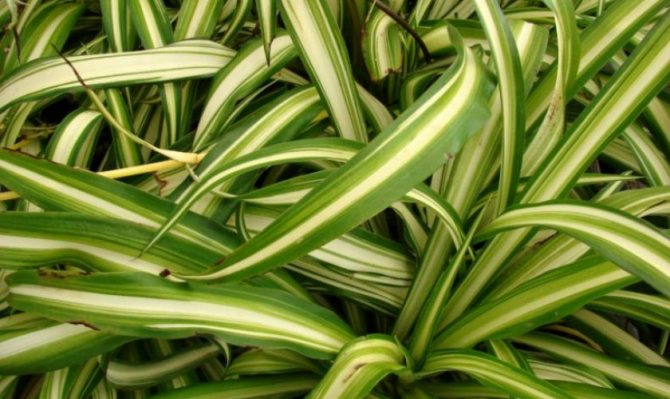

Improper watering
Despite the love of moisture, chlorophytum has a negative attitude towards stagnant water. Waterlogging leads to decay of the roots, which will immediately affect the leaves: they begin to dry from the ends and acquire a rich yellow color. In this case, it is recommended to transplant the flower into a new pot and inspect the roots without fail, while removing the damaged parts.
Excess or deficiency of fertilizers
Owners with long experience know that chlorophytum has a rather powerful root system, which in a short time assimilates the soil, while depleting it. However, the lack or oversaturation of fertilizers negatively affects the flower: the leaves begin to fade, and their tips dry out.
In order not to omit this, it is important to follow the fertilization rules. In the spring and summer, feeding is carried out weekly, and in the fall - twice a month. In winter, fertilizers are not applied, since the flower is at rest.
Unsuitable soil composition
Chlorophytum needs loose soil. Too much sodium or increased density will cause the leaves to dry out and turn brown. After adding sand and peat, as well as changing the composition of fertilizers, the flower will soon regain its previous appearance. The best option is to use ready-made soil for growing a flower, which is designed specifically for him.


Tank dimensions
The lack of transplanting leads to the fact that the roots of the plant cease to fit in the pot. Their weathering and lack of nutrients lead to a slowdown in growth, in addition, old leaves dry out, and new ones do not grow. As a result of the loss of green mass, the plant dies. To prevent this, it is important to transplant a flower into a new, more spacious pot every year.
Pests
Despite the rather high resistance of chlorophytum to attacks by various pests and pathogenic bacteria, this still happens sometimes. The defeat by aphids and scabbard is reflected in the flower by dryness of the tips of the leaves. Gradually, they deteriorate along their entire length and fall off. The presence of pests can be determined by the presence of white larvae on the plant.
They get rid of them by wiping the plant with soapy water, and sprinkle the ground with black pepper. Aphid infestation is destroyed by treating chlorophytum with any fungicide.
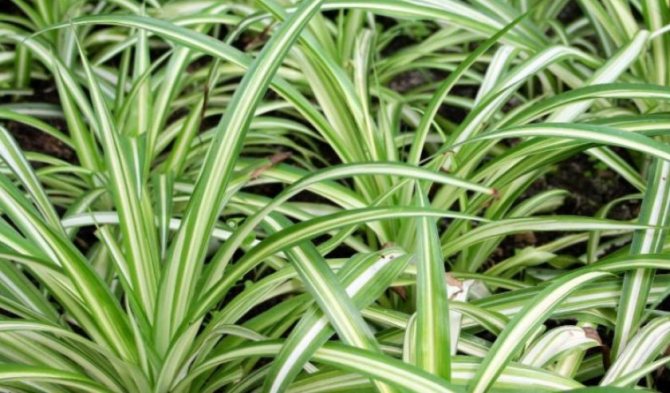

Prevention measures
In order to prevent problems with leaves, you need to follow some preventive measures in the care of chlorophytum:
- follow the rules of watering;
- inspect the flower for the presence of pests;
- apply fertilizers according to the recommendations;
- do not expose the pot to the sun;
- transplant regularly.
Helpful care tips
In order to avoid mistakes when growing chlorophytum, you need to know the basic rules for caring for it:
- do not place the plant where direct sunlight is present;
- in the summer, you need to carry out frequent and abundant watering, as well as spraying;
- systematically remove damaged or diseased leaves;
- apply fertilizers exclusively during the growing season.
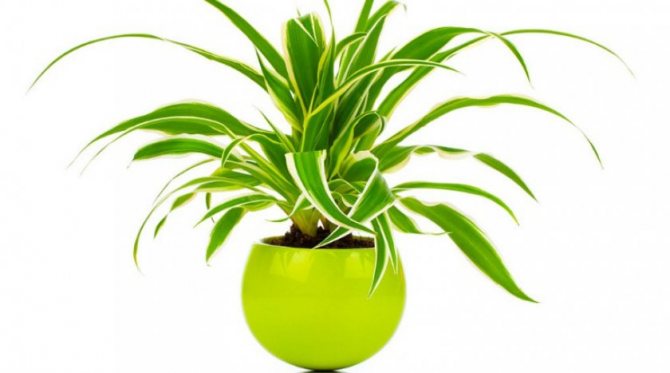

As can be seen from all of the above, the tips of chlorophytum leaves are quite sensitive to many factors.Knowing them and adhering to the rules of care, you can avoid many problems and prolong the life and beauty of the flower.
Major diseases and pests
To prevent damage to chlorophytum by pathogenic microflora and plant parasites, it is necessary to periodically examine the flower and, if necessary, carry out the most effective treatment.
| Striking factor | Signs of defeat | Folk remedies | Chemicals |
| Spider mite | Thin, barely visible web between leaves and stem | Treat the plant with infusions or decoctions based on tobacco, hot pepper, pyrethrum or chopped garlic | Treat the aerial part of the plant with "Aktellik" diluted in water at the rate of 1 ml per 1 liter of water |
| Aphid | Small insects on the leaves | Treat the plant with a solution based on laundry soap | Treat the aboveground part of the plant with "Fitoverm" |
| Shield | Sticky spots on the leaves | Wipe the leaves with a damp cotton pad dipped in soapy water | Axoris Quick-Sticks |
| Mealybug | Highly identifiable sucking insects | Brush the leaves with garlic gruel | Treat the plant with a solution of "Karbofos" or "Actellika" |
Prevention measures
In order to prevent problems with leaves, you need to follow some preventive measures in the care of chlorophytum:
- follow the rules of watering;
- inspect the flower for the presence of pests;
- apply fertilizers according to the recommendations;
- do not expose the pot to the sun;
- transplant regularly.
Important! During the heating season, if the pot is near the radiator, it is recommended to put a wet rag or towel on it. This will help increase the humidity in the room.
Causes of yellowing and drying of leaves
Almost always, drying and wilting of chlorophytum leaves are the result of errors in care:
- If the aboveground part of the plant turns pale and then becomes light yellow, it means that chlorophytum does not have enough lighting or the root system of the flower has grown greatly and the plant does not receive adequate nutrition.
- If the lower leaves along their entire length become bright yellow, then the reason may be waterlogging of the soil and, as a result, decay of the root system.
- If the tips of the leaves dry, this indicates insufficient moisture in the soil or too dry air.
It is important to remember that periodic loss of lower leaves is natural for chlorophytum. In order to rejuvenate the culture, it is recommended to remove dried foliage in a timely manner.
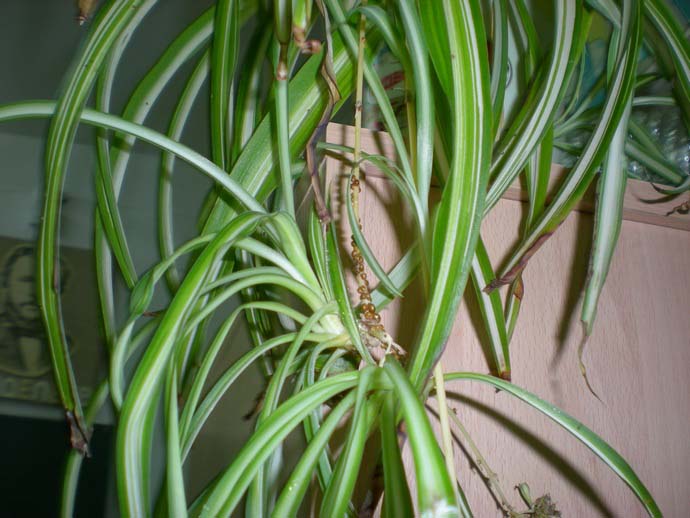

Description of the plant
The chlorophytum flower is a herb that currently grows in South America and Australia. The homeland of the plant is Australia, but in Russia the flower does not like the hot climate and does not withstand increased dryness in the room.
But it perfectly withstands in dry soil for more than a week, so it is actively grown by people whose work is connected with business trips.
At the moment, there are about 250 species of the presented plant. In relation to it, the following advantages and features of the flower can be distinguished:
- Chlorophytum blooms, although this is rarely observed. This happens in March, the flowering period lasts the entire growing season.
- In the period from October to January, the flower begins a dormant period - it needs to be watered less often and not to use bait.
- The plant will easily lose its decorative effect if the tips of the leaves dry out, which happens constantly due to improper care.
- It is generally accepted that chlorophytum looks more interesting on a stand or in a wall pot. But it can often be found in a flower bed in a garden.
The presented flower can be grown separately or used to create a composition.
Ways to solve the problem
Any problems that arise when growing home chlorophytum, including such common ones as yellowing and drying of the leaves, can be solved quite easily.
- In case of insufficient illumination, it is necessary to place chlorophytum near the window or arrange additional illumination of the plant.
- A flower with an overgrown root mass needs to be transplanted into a larger pot.
- Decay of the root system should be treated by removing diseased roots and then transplanting the plant into fresh nutrient soil, as well as adjusting the irrigation regime.
- When the aboveground part dries up, it is required to increase the frequency of watering and spray the plant, and in the summer, shower.
- To prevent the appearance of brown tips on the leaves, indicating a lack of nutrients at the stage of active growth, it is necessary to provide the plant with systematic feeding from spring to autumn.
Waterlogging of the soil
Chlorophytum is a moisture-loving plant, but it does not tolerate regular stagnation of water in a pot.
Due to waterlogging, the roots of the flower rot, which is reflected in the state of the leaves: they begin to dry from the tips, and the leaf plates themselves acquire an intense yellow color.
If root rot is affected, it is better to transplant the flower into new soil. The roots should be examined, all rotten areas should be removed. Drainage in the pot is required so that excess water can go into the pan.



